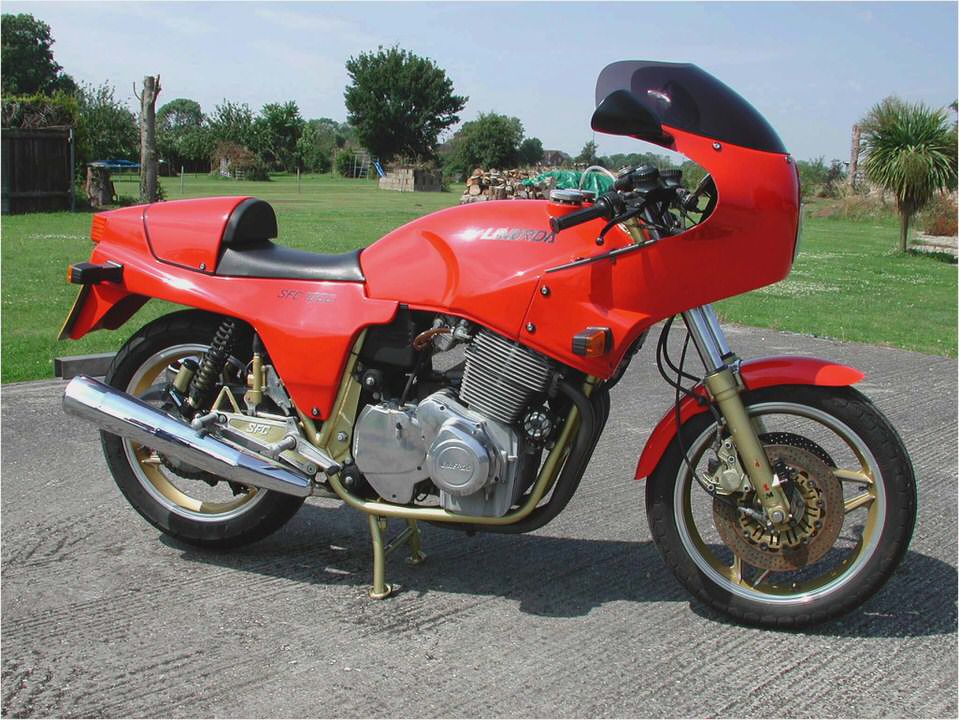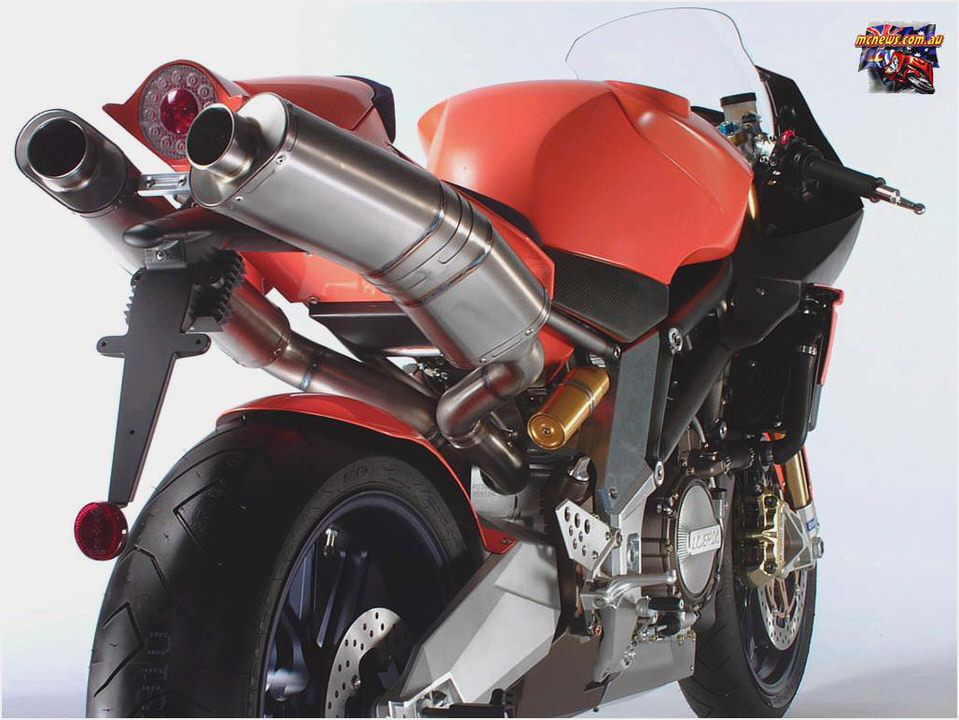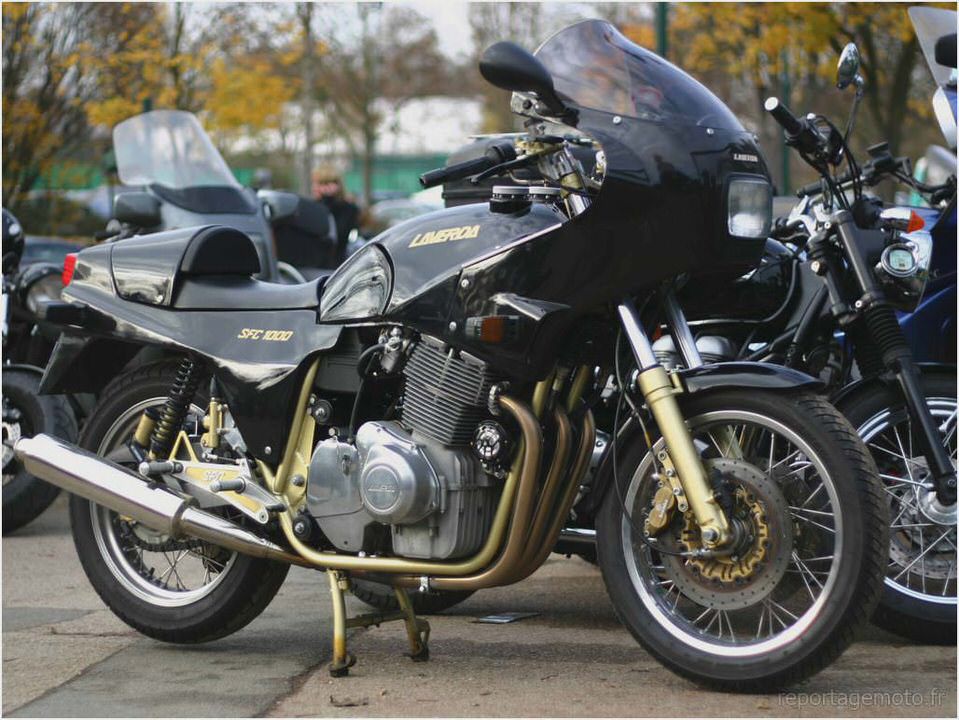30 Nov 2011 | The big Italian triple is one hell of a motorcycle
by Ian Falloon
Laverda’s legend was built around the 750 SFC; the bright orange factory racers that dominated European endurance racing in the early 1970s. As the 750 twin became outclassed Laverda turned towards the fire-breathing 180-degree 1000cc Jota triple to sustain the myth. But by the 1980s not even the roguish exhaust note or the rush of top-end power could disguise the 180’s excessive vibration caused by the two outside pistons rising and falling together.
Laverda sought to tame their triple with the more orthodox 120-degree crankshaft layout, in the process creating a motorcycle with a completely different character.
Like all Italian manufacturers Laverda struggled to survive in the early 1980s. The 120-degree triple was still an engine rooted in the past and the RGA, RGA Jota, and RGS Executive were misguided attempts to increase sales. By the end of 1984 it was obvious Laverda was in serious financial difficulty but it surprised everyone by releasing the SFC 1000 for 1985.
As a limited edition model the SFC 1000 was packed with special features. The engine was hand assembled, the forged 10.5:1 pistons were from the factory F1 racer, and the cylinder head was modified to include larger (40.6mm) inlet valves and smaller (34.0mm) exhaust valves. The power was 69.9kW (95hp) at 8000rpm, and a Formula One racing kit was optional.
This kit included P1 (Prova 1) camshafts, 36mm carburettors and a close-ratio transmission.
The SFC 1000 chassis was significantly uprated over the standard RGS 1000 but it was still old fashioned. This chassis now included a Verlicchi-built box-section aluminium swingarm, 41.7mm Marzocchi M1R fork, 300mm fully-floating front disc brakes, and three-spoke 18in Oscam wheels. The brakes were Brembo Gold Series, the rear disc full floating with a frame-mounted linkage.
At a time when most other manufacturers were moving towards a single rear shock, the SFC retained a pair of new Marzocchi remote reservoir shocks.
The red-painted fibreglass bodywork was a similar style to the 1000 RGS, but the 22lt fuel tank had twin screw-type filler caps. The beautifully milled SFC-emblazoned footpeg brackets set the SFC apart from more mundane motorcycles. Unlike the automotive-style instrument panel of the RGS, the SFC panel was a simple aluminium plate with three instruments (tachometer, speedometer, and oil temperature gauge).
Rolling on a long 1528mm wheelbase and weighing a daunting 248kg, the SFC 1000 created a huge presence and was an overwhelming motorcycle for anyone short of stature. But once rolling it was impressive. Stability was unquestioned and the power seamless almost from idle.
At a time when motorcycle design was embracing innovation, the SFC 1000 remained a bastion of conservatism, and although representing an earlier age the SFC 1000 ensured the Laverda legend didn’t die with a whimper. With classically beautiful styling the SFC 1000 also benefited from nearly 15 years of development. What was already a robust design was perfected into an extremely reliable machine, with excellent handling and performance.
With the wonderful SFC 1000 the classic Laverda triple finally finished, and for many they were the last real Laverda motorcycles.
FIVE FACTOIDS
The 120-degree engine was created by Giuseppe Bocchi. Bocchi had previously worked with Ing. Fabio Taglioni at Ducati on the Pantah, and with MV Agusta.
There he had access to computer design and he established a computer design centre at Laverda.

Laverda had already experimented with a 120-degree crankshaft layout in the prototype triples of 1969 and 1970, even racing with one in the Bol d’Or in 1975, but the first production 120-degree model was the 1000 Jota 120 of 1982.
The RGS 1000 of 1982 was intended to save Laverda from the slide that began in 1979. Instead of continuing the traditional sporting path the RGS 1000 represented a fresh take on the sportstouring motorcycle and included radical styling.
During 1985 Laverda was placed under controlled administration and SFC 1000 production was initially stated at 200, with half going to Germany.
The SFC 1000 was produced spasmodically until 1989, primarily to use parts after the company was reformed as Nuovo Moto Laverda in May 1988. The final batch was produced specifically for the German market. These were black, with wire-spoked wheels.
These were the last triples produced in Breganze, but a final two examples were produced in 1991 by the new Laverda company in Zane.
RESOURCES
• Get this book:
Laverda Twins and Triples Bible
• Check out this photo gallery:



- Laverda 668S Formula
- Www.sv650.org – Suzuki SV650 / SV650S web – OCTOBER 1999 ARCHIVE
- Laverda 668 Ghost Strike
- Italian Classic: 1985 Laverda RGS 1000 Rare SportBikes For Sale
- 2005 Laverda Owners’ Club Rally – Classic Motorcycle Events – Motorcycle…
